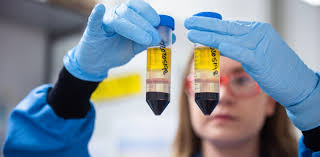In 2022, more than three million children worldwide are estimated to have died due to infections that no longer respond to antibiotic treatments. This distressing statistic stems from a recent study by two leading experts in child health, Dr. Yanhong Jessika Hu from the Murdoch Children’s Research Institute in Australia and Professor Herb Harwell from the Clinton Health Access Initiative.The study reveals that children in certain parts of the world, particularly in Africa and South East Asia, are at the greatest risk of death due to antimicrobial resistance.These regions face more significant challenges in healthcare access and infrastructure, amplifying the deadly impact of infections that antibiotics can no longer treat effectively.
Antimicrobial resistance occurs when the bacteria, viruses, fungi, or parasites that cause infections evolve in such a way that common medications—especially antibiotics—are no longer effective. When microbes become resistant to the drugs designed to kill or inhibit them, even routine or minor infections can become life-threatening. This issue is growing rapidly, with antimicrobial resistance identified as one of the greatest threats to global public health today.
Despite their critical role, antibiotics do not work against viral infections like the common cold, influenza, or COVID-19. However, antibiotics are often misused to treat viral illnesses, which contributes to the development of resistant bacteria.The rapid rise of antimicrobial resistance is largely attributed to the overuse and misuse of antibiotics.
At the same time, the production of new antibiotics has significantly slowed down. Developing new antibiotics is a lengthy and expensive process that involves extensive research, clinical trials, and regulatory approval. This slow pace of development contrasts with the growing need for new drugs as bacteria continue to evolve.
The report also highlights the troubling increase in the use of “last-resort” antibiotics. These are drugs that are typically reserved for the most severe, life-threatening infections because they are the only remaining option when other antibiotics no longer work. The fact that these antibiotics are being used more frequently suggests that common treatments are no longer effective against many infections. This not only jeopardizes the treatment of current infections but also puts future medical practices at risk.
Dr. Yanhong Jessika Hu and Professor Herb Harwell call for urgent, coordinated global action to address the rising threat of AMR. The situation is particularly dire in the world’s most vulnerable regions, where limited access to healthcare and medications exacerbates the problem. If not addressed, antimicrobial resistance could undo decades of progress made in improving global child health.
Without decisive action to combat overuse, improve healthcare infrastructure, and increase research into new antibiotics,antimicrobial resistance could lead to an era where even minor infections—previously treatable—become fatal. This would also undermine advancements made in areas like childhood vaccinations, surgical procedures, and cancer treatments, all of which rely heavily on effective antibiotics.
Madina Mammadova\\EDnews










